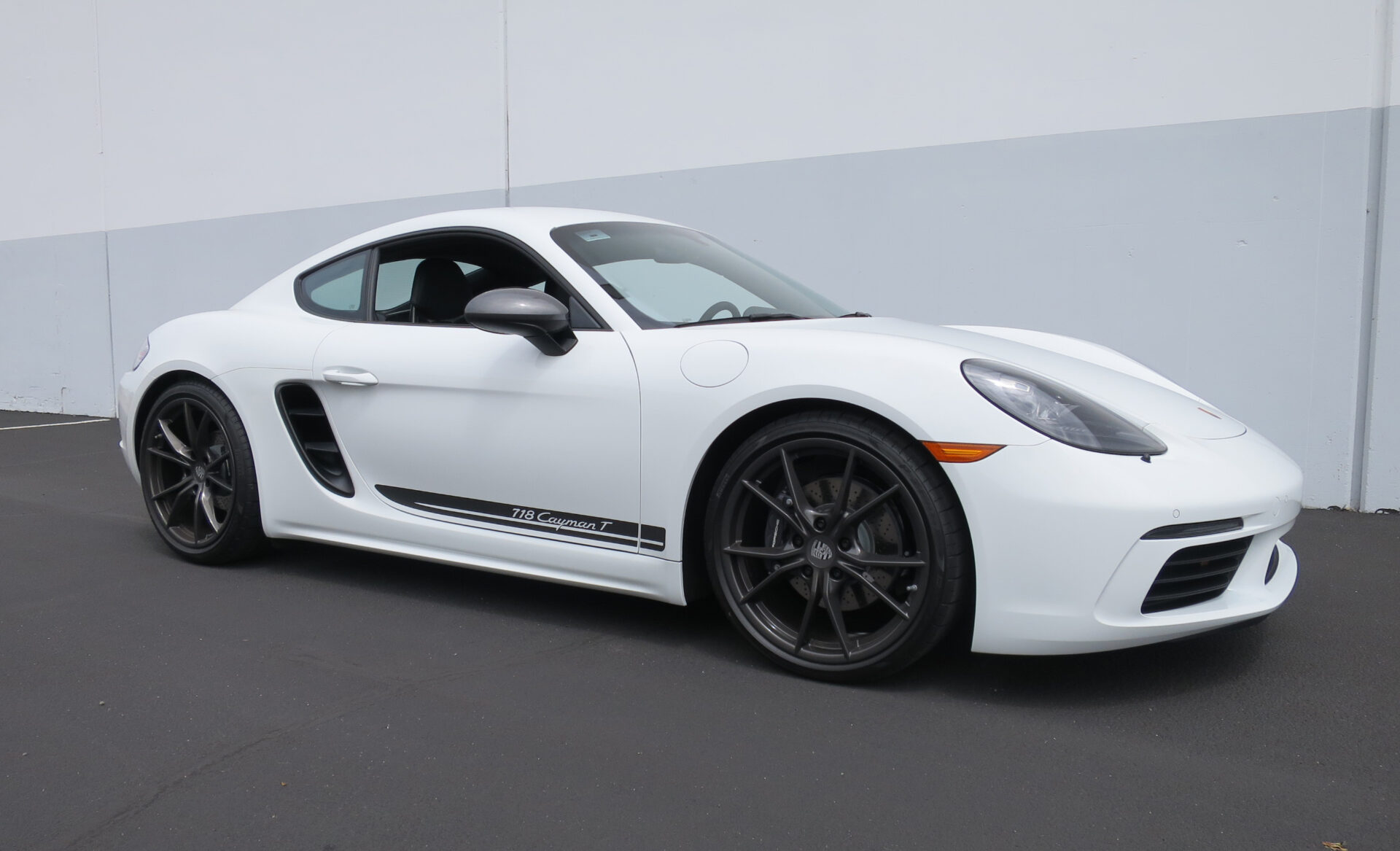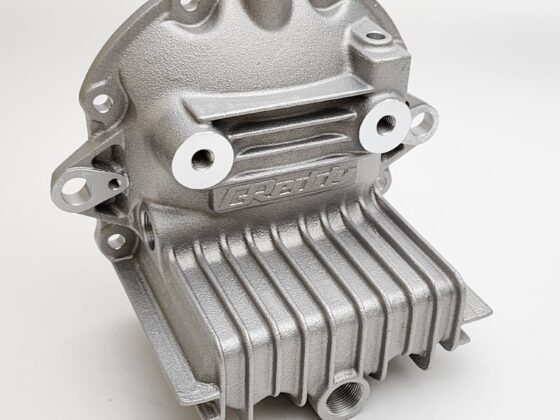 I liked that the RGS design mounted the grills behind the horizontal plastic bits instead of in front. They are made in the USA too. I goofed slightly on the first install, but I did it better on the other side. I have said it before, the second time around is usually easier. Hey, I caught my first leaf!
I liked that the RGS design mounted the grills behind the horizontal plastic bits instead of in front. They are made in the USA too. I goofed slightly on the first install, but I did it better on the other side. I have said it before, the second time around is usually easier. Hey, I caught my first leaf!
 To see how much the car actually weighs, I brought it over to the MotoIQ garage to put in on corner scales.
To see how much the car actually weighs, I brought it over to the MotoIQ garage to put in on corner scales.
 3067lbs on the scales with an almost full tank of gas. I would guess about half a gallon short of a full tank, so we can call it 3070lbs as delivered. It weighs roughly 94lbs more than the spec sheet said. The gas tank is 14.3 gallons, gas is about 6lbs a gallon, so the numbers work out surprisingly close assuming the spec sheet value is without gas. I do have the extra fire extinguisher in there adding a little weight.
3067lbs on the scales with an almost full tank of gas. I would guess about half a gallon short of a full tank, so we can call it 3070lbs as delivered. It weighs roughly 94lbs more than the spec sheet said. The gas tank is 14.3 gallons, gas is about 6lbs a gallon, so the numbers work out surprisingly close assuming the spec sheet value is without gas. I do have the extra fire extinguisher in there adding a little weight.
 With me in the car, the total package was 3208lbs. With me in the S2000, that was about 2960lbs before the added weight of the turbo stuff, so the Cayman T is about 250lbs more than the S2000 in naturally aspirated trim.
With me in the car, the total package was 3208lbs. With me in the S2000, that was about 2960lbs before the added weight of the turbo stuff, so the Cayman T is about 250lbs more than the S2000 in naturally aspirated trim.
 Looking at the front/rear and left/right distribution of the Cayman T without and with me in the car, I would say Porsche did a good job in driver and component placement. The front/rear distribution only shifted 0.3% to the front. Left/right shifted 0.9% to the left, shifting across the middle 50/50 split.
Looking at the front/rear and left/right distribution of the Cayman T without and with me in the car, I would say Porsche did a good job in driver and component placement. The front/rear distribution only shifted 0.3% to the front. Left/right shifted 0.9% to the left, shifting across the middle 50/50 split.
 The frunk is quite large. I would say it has more storage space than the trunk of the S2000. And the Cayman still has rear trunk space too. Anyway, I removed the upper plastic cover to expose the road side emergency air compressor located under that rectangular black cover in the middle. In the upper left and right corners of the frunk are storage holders for tire goop and tow hook and tools. Someday, when the stock battery goes out, I will replace it with a lithium battery to shave around 30lbs. The wires coming out of the top of the shocks are for the active suspension.
The frunk is quite large. I would say it has more storage space than the trunk of the S2000. And the Cayman still has rear trunk space too. Anyway, I removed the upper plastic cover to expose the road side emergency air compressor located under that rectangular black cover in the middle. In the upper left and right corners of the frunk are storage holders for tire goop and tow hook and tools. Someday, when the stock battery goes out, I will replace it with a lithium battery to shave around 30lbs. The wires coming out of the top of the shocks are for the active suspension.




12 comments
Congratulations! Thanks for the detailed article. As a non-Porsche guy its neat to see what makes them tick.
A lot of money to get passed by dudes with a C6 at laguna with some apex wheels and some 200tw Nankangs.
I auto-x’d a C6 when it first came out way back when. I didn’t care for it; it felt bigger than it was whereas the Cayman feels smaller.
I hear you. I cycled through an AP2 S2000, C6 Z06, F80 M3, and now TTRS daily and 991.1 GT3 track car. between these cars and rentals and driving friends’ cars, realized I valued a smaller lighter car and mid/ rear engine feel over other factors. There’s always someone richer/ smarter/ faster, go the route that makes you happy.
Except Khiem has a car he can drive to and from the track comfortably and also drive on a daily basis. A Cayman is far more comfortable than a C6 on a day to day basis. More interior and trunk space as well. Plus he doesn’t have to put up with a god awful early 2000s GM interior.
More money, but you get what you pay for.
I have solid trans mounts in my base 718. I think I bought the 981 models from tarett engineering. With the standard mounts a floor jack under the back end of the trans could move it 1.75 inches before the car moved. That was with 20k miles. Didn’t notice much change in nvh. Improved shifting a lot.
Good to know on the compatibility! I was hoping Porsche would carry over parts as OEMs do to save money. I still need to figure out how to disable any potential error codes because of the active mounts. I hopefully can code out the active mounts as they are an optional feature.
Doesn’t the current Toyota 86 have an analog tach right in the middle of the dash? My 2013 FR-S does.
It’s a digital tach. But at least one of the display options is round like an analog tach. Other options include a bar…. graph, I guess you could call it. Which I did not particularly care for on the S2000.
Thank you for the explanations of how the switched water pump works to reduce temp in sport mode! I do have the same idea of leaving it open all the time for cooler operations. I like the idea of plugging the control vacuum line. Do you know where that pump is? I have a 23′ CGTS 4.0. It has the same enhanced cooling feature, and I’d think it has the similar cooling components. Thanks!
I don’t know where it is on the 4.0L 6-cyl, but on the 4-cyl turbo, it’s on the side of the engine next to the passenger compartment bulkhead. I’ve found pictures of where the vacuum line goes and it’s not easy to get to.
For now, I’m content with just running the car in Sport + mode all of the time. I need to ask someone to see if the water pump still stays closed for faster warm-up from a cold-start even in Sport + mode. I imagine it would in order to reduce emissions. In Sport +, even during track use, I only saw the coolant temp get up to 87C max. I’ll see it fluctuate between 82-86C during everyday driving.
EPDM rubber is very commonly used in cars for gaskets, o-rings, and coolant tubes. Anything related to the coolant system, EPDM is typical. It commonly comes in two grades, cheaper that is good for 120C and more expensive that is good for 150C. Having worked for a long time in the auto industry and also observing the frequency of water pump failures on modern Porsches, I have it a very high likelyhood the cheaper rubber is used in the water pump. I mean, there’s even a plastic impeller instead of metal. OEMs are looking to save a dollar anywhere they can.
In Normal mode, it seems the coolant runs between 100-105C. Which is a lot closer to that 120C limit. So my hypothesis is running in Normal degrades the seals and gaskets in the water pump much faster. Plus the engine runs much warmer oil. So after a drive and doing a shutdown, everything is just going to be hotter. But running in Sport + with the coolant only around 85C and oil around 90-95C, the seals should last much longer. Fingers crossed.
Thanks again for sharing your knowledge! I’d think the thermostat should take care of the faster warming up mostly, as it opens up typically at 180-195F (not sure about Porsche cars)? The open water pump will circulate the coolant continuously, but might not affect the oil warm-up much…at least, that’s my theory :).
Aside from the vacuum controlled water pump you mentioned, there looks to be a vacuum control valve for the coolant going into the engine oil cooler. I don’t know how to add picture here, but if you google ‘718 BOXSTER ENGINE OIL COOLER INLET LINE OEM 98130707500’, you will likely find used parts that show the picture. It looks to be controlling the amount of coolant, or maybe just on/off, going into the engine oil/water exchanger (located on top of the engine, driver side, by the oil filter in the 4.0L)
I’ll make a spring project to play with vacuum lines and see what happens 🙂